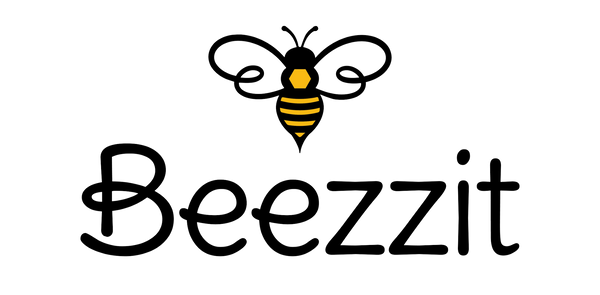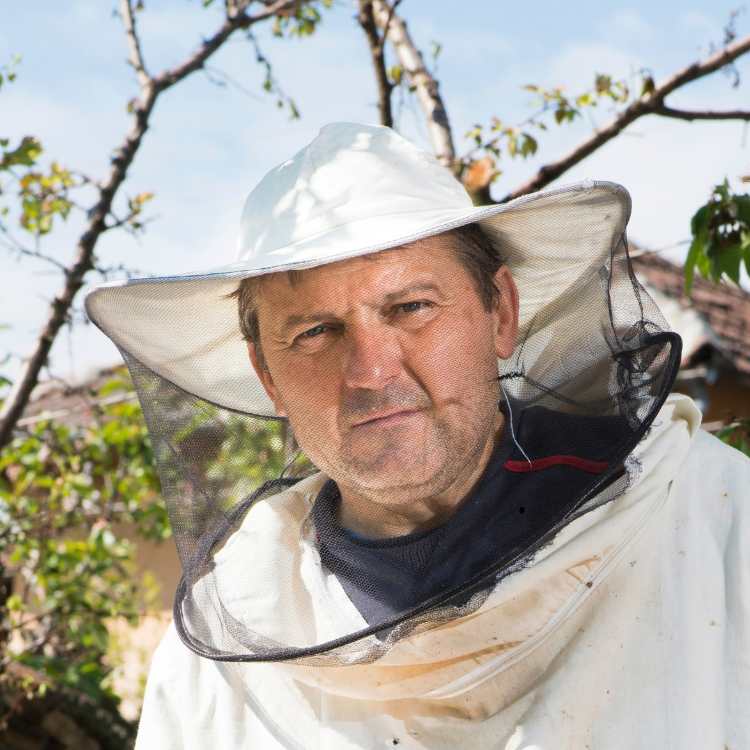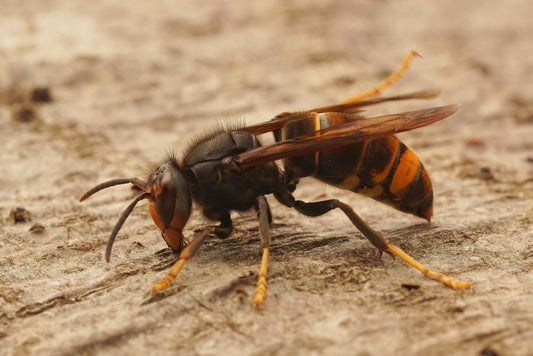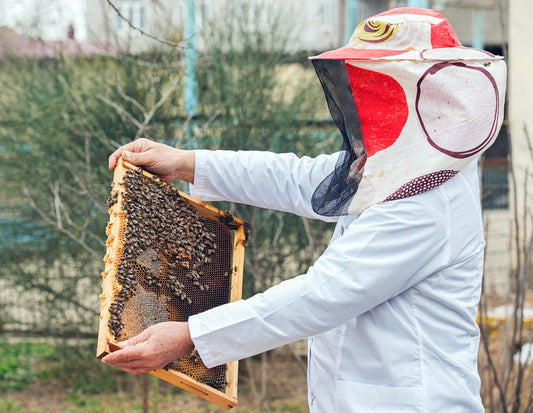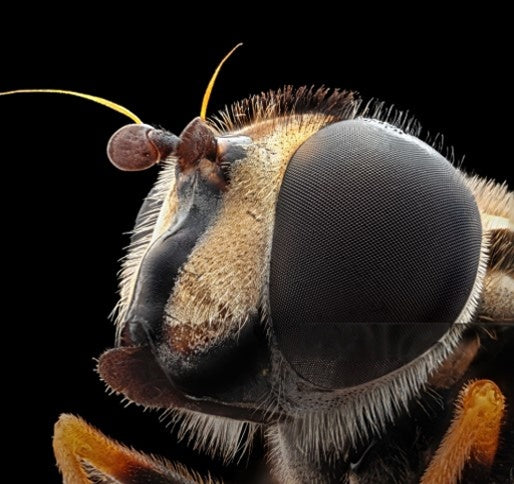Most often, hoverflies and sweat bees fly around your flowers and garden. At first, they appear quite similar but actually look and behave differently and, therefore it's important to know how. Understanding their differences helps to identify and understand their function within our own ecosystems. So let's begin and outline basic differences between hoverfly vs sweat bee that would make your life easier as well as assist in identifying the creatures.
What is a Hoverfly?
A hoverfly, which is also called a flower fly or syrphid fly, is an insect that looks a lot like a bee or wasp, but it is really a kind of fly.
Key Characteristics:
- It has one pair of wings, while bees have two pairs.
- It has big compound eyes that cover most of its head.
- The body can have black and yellow stripes. This helps it look like a bee or wasp, so it can avoid being eaten.
Hoverflies are not harmful. They do not sting. They use their appearance for safety. Hoverflies are often seen flying over flowers to gather nectar and pollen. Their job in nature is very different from that of bees.

What is a Sweat Bee?
Sweat bees are small, solitary bees that belong to the Halictidae family. They are named so because they like the salt in human sweat.
Key Characteristics
- They are tiny to medium-sized. They are either metallic green, blue, or black.
- They have two pairs of wings.
- They may sting, but their sting is mild and not dangerous unless provoked.
They are efficient pollinators; this is why they are often near flowers, especially when it's warm. Unlike honeybees, sweat bees normally dig individual burrows in the ground.

A closeup top image of a sweatbee
Appearance Differences
One of the easiest ways to distinguish hoverfly vs sweat bee is by looking closely at their body structure.
- Hoverflies: Have a fly-like body with a smooth, hairless appearance. Their bodies often have bold black and yellow patterns that mimic bees or wasps.
- Sweat Bees: Have a bee-like body that is more elongated and covered with fine hairs, especially near the thorax and legs.
Another visual clue is the wings. Hoverflies have a single pair of wings, while sweat bees have two pairs.
Behavior Differences
The behavior of hoverfly vs sweat bee also differs significantly.
- Hoverflies: Hover in mid-air, often darting quickly from flower to flower. Their flight is smooth and quiet.
- Sweat Bees: Land more directly on flowers and may dig burrows in the ground to build their nests. They may land on humans to drink sweat, but they do not hover in place like hoverflies.
Understanding their flight patterns and habits can make it easier to identify these insects in your garden.
Habitat and Role in the Environment
Hoverflies and sweat bees may occupy the same places, but they have different roles.
- Hoverflies: Hoverflies are mostly seen in gardens, fields, and forests. They are significant because their larvae feed on aphids and other garden pests, thus hoverflies are natural pest control agents.
- Sweat Bees: Like loose soil so they can dig burrows. They are good pollinators for wildflowers and crops, and help many ecosystems thrive.
Do Hoverflies and Sweat Bees Sting?
The biggest difference between hoverfly vs sweat bee, is that sweat bees can sting, while hoverflies cannot.
- Hoverflies: They don't have stingers and are harmless.
- Sweat Bees: They can sting but only occasionally cause pain, as they feel frightened.
If it's warm, when you spot an insect flying close to you, the probability is that it's a hoverfly and not a sweat bee.

A closeup image of a stinger
How to Identify Them in Your Garden
Just in case you are interested in knowing what type of insect is visiting your garden, a hoverfly vs sweat bee, here are some simple guidelines to identify them:
- Look to the Eyes: As seen above, hoverflies have huge, noticeable eyes covering most of their head, whereas sweat bees possess much more normal, bee-like eyes.
- Check the Wings: If you see only one pair of wings, it’s a hoverfly. Sweat bees always have two pairs.
- Observe Their Flight: Hoverflies hover steadily in the air and move quickly between flowers. Sweat bees fly directly and land quickly.
Why Knowing the Difference Matters
Understanding the difference between hoverfly vs sweat bee can help you appreciate their roles in the environment. Both insects are beneficial in different ways:
- Hoverflies: Help control pests like aphids, making them valuable for natural pest management.
- Sweat Bees: Help pollinate crops and flowers, contributing to the health of gardens and farms.
Knowing which insect you are observing can also help you stay calm around them, as hoverflies pose no threat, while sweat bees are generally harmless unless provoked.
Encouraging Beneficial Insects
If you want to attract both hoverfly vs sweat bee species to your garden, consider the following tips:
- Plant Native Flowers: Both hoverflies and sweat bees are drawn to native plants that produce lots of pollen and nectar.
- Avoid Pesticides: Chemicals can harm beneficial insects. Opt for organic gardening methods to keep your garden healthy.
- Provide Nesting Areas: Sweat bees prefer bare soil for nesting, so leave some open ground in your garden.
- Add Water Sources: A small dish of water can provide hydration for bees and hoverflies during hot days.
Conclusion
In summary, the key differences between hoverfly vs sweat bee lie in their body structure, flight patterns, and roles in the ecosystem. Hoverflies are harmless flies that mimic bees and help control pests, while sweat bees are true bees that play an essential role in pollination. By learning to identify and appreciate these insects, you can create a more bee-friendly garden and support biodiversity. Next time you see a buzzing visitor, you’ll know whether it’s a hoverfly or a sweat bee—and you can enjoy the benefits they bring to your outdoor space.
Ain’t it fun learning about the world of these buzzers? Learn everything about bees and beekeeping from our full blog here.
